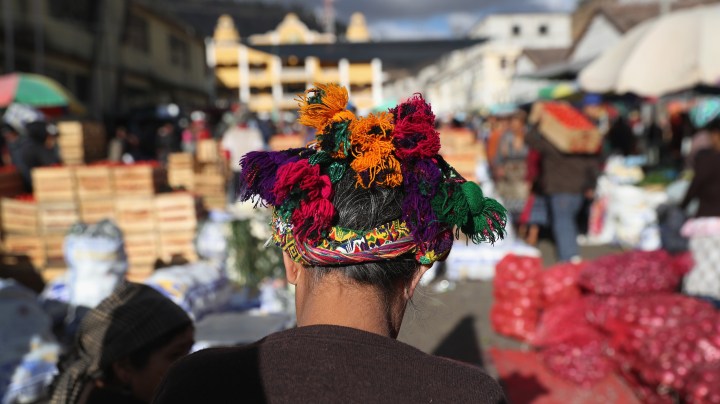How Unemployment & Economic Strain in the US Is Having a Ripple Effect in Latin America

A woman, wearing traditional Mayan dress, shops at a vegetable market on February 11, 2017 in Almolonga, Guatemala. Photo by John Moore/Getty Images
The entire world is grappling with the coronavirus health pandemic’s economic fallout. In the United States, shelter-in-place measures and the shutdown of businesses have wiped out thousands of jobs, leaving workers unemployed at levels unparalleled since the Great Depression. Such catastrophic losses have a ripple effect throughout the rest of the globe, particularly in Latin America, a region the International Monetary Fund has said might be set back an entire decade.
Even at a more domestic level, people are noticing the economic strain and how it’s playing out between the U.S. and Latin America. As NBC Latino reports this week, losses in the U.S. have meant that many immigrant families aren’t able to provide remittances to their loved ones back in their countries of origin. A 2016 report from the Inter-American Dialogue found that the practice, which is common and often keeps entire communities afloat, resulted in Latin America and the Caribbean receiving about $69 billion from those working in the U.S.
But, now that employment has reached a screeching halt, many families don’t have the wages to support their families back home.
“I couldn’t even pay rent this month,” Herminio Rodriguez told NBC, “and we need to keep a little bit of reserves so we can eat.”

Rodriguez is a Miami-based restaurant worker who says it is now nearly impossible to take care of his relatives since he lost his job. His parents and son in Guatemala depend on the monthly remittance he provides for basic necessities.
This is all especially troubling because remittances were growing: NBC notes World Bank statistics that show money to Latin America and the Caribbean grew by 10% to $88 billion in 2018. In countries such as Nicaragua and Guatemala, that flow makes up about 12% of the countries’ GDP, while it hovers at about 20% in El Salvador and Honduras.
In addition, the logistics of how to wire money have been thrown. In some communities, commonly used services like Western Union have closed and older individuals might not be as familiar with online platforms for sending money. Still, America’s Quarterly recently explained that the money transfer industry has been expanding and new start-ups and businesses have been entering the marketplace to facilitate transfers. But that, unfortunately, doesn’t help people whose funds have dried up and who don’t have the money to help their families in the first place.
